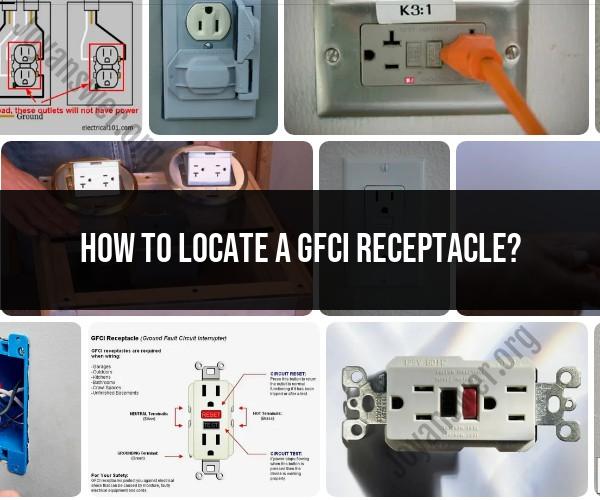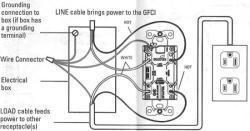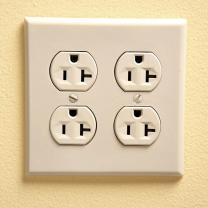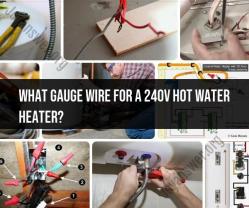How to locate a GFCI receptacle?
Locating a Ground Fault Circuit Interrupter (GFCI) receptacle in your home or building is important for safety purposes, as GFCIs are designed to protect against electrical shocks in areas where water is present. Here are steps to help you locate a GFCI receptacle:
Check Common Locations:
- GFCI receptacles are typically installed in areas where water and electricity may come into contact, increasing the risk of electrical shock. Common locations include:
- Bathrooms
- Kitchens
- Laundry rooms
- Basements
- Garages
- Outdoor outlets
- GFCI receptacles are typically installed in areas where water and electricity may come into contact, increasing the risk of electrical shock. Common locations include:
Inspect Near Sinks and Water Sources:
- Start your search near sinks, faucets, and water-using appliances. GFCIs are often located within a few feet of these water sources.
Look for GFCI Outlets:
- GFCIs are commonly installed as outlets with "Test" and "Reset" buttons. These buttons are used to test and reset the GFCI's circuit.
- Examine each outlet in the areas mentioned above to see if it has "Test" and "Reset" buttons. If you find one, it's likely a GFCI outlet. Press the "Test" button to see if it trips the circuit (shuts off power) to confirm it's functioning.
Check Circuit Breaker Panel:
- If you can't locate a GFCI outlet, check the circuit breaker panel (electrical service panel) in your home or building.
- GFCIs can be connected to circuit breakers, which may be labeled as "GFCI," "GFI," or similar. Look for any breakers with such labels and ensure they are in the "On" position.
Examine Outdoor Outlets:
- Outdoor outlets are often protected by GFCIs. Check outdoor receptacles, including those on patios, decks, and near pools or hot tubs.
Inspect Older Homes:
- In some older homes, GFCIs may not be readily visible as outlets. They may be installed within the electrical wiring itself. In such cases, you may need to hire an electrician to locate and update them.
Use a GFCI Receptacle Tester:
- A GFCI receptacle tester is a handy tool that can help identify GFCI-protected outlets. It typically has three lights and a plug. When you plug it into an outlet, it will indicate whether the outlet is GFCI-protected and functioning correctly.
Consult an Electrician:
- If you've searched extensively and cannot locate a GFCI receptacle, or if you suspect there is a problem with the GFCI protection in your home, it's advisable to consult a licensed electrician. They can help identify and resolve any issues.
Remember that GFCIs are a crucial safety feature in homes and buildings, and it's essential to keep them in good working condition. Regularly test GFCI outlets by pressing the "Test" button and ensuring they trip the circuit. If you encounter any issues or if a GFCI does not reset, it should be inspected and repaired promptly to maintain electrical safety.
Locating a GFCI Receptacle: Essential Steps for Electrical Safety
Ground Fault Circuit Interrupters (GFCIs) are important safety devices that protect people from electrical shock. They work by monitoring the flow of electricity in a circuit and shutting off the power if there is a ground fault.
GFCI receptacles are required in all wet or damp locations, such as bathrooms, kitchens, and garages. They are also required in outdoor locations.
If you are unsure whether or not you have GFCI receptacles in your home, there are a few steps you can take to locate them:
- Look for receptacles with two test buttons: one labeled "Test" and one labeled "Reset."
- If you don't see any receptacles with test buttons, check the breaker box. GFCI breakers will have a "Test" button and a "Reset" button.
- If you have a GFCI breaker, all of the receptacles on that circuit will be GFCI protected.
- You can also use a GFCI tester to identify GFCI receptacles.
GFCI Outlet Search: How to Find and Test for Safety
Once you have located your GFCI receptacles, it is important to test them regularly to make sure that they are working properly. To test a GFCI receptacle, follow these steps:
- Press the "Test" button.
- The "Reset" button should pop out.
- Press the "Reset" button to turn the power back on.
If the GFCI receptacle is working properly, the "Reset" button should pop out when you press the "Test" button. If the "Reset" button does not pop out, the GFCI receptacle is not working properly and should be replaced by a qualified electrician.
Ensuring Electrical Safety: Identifying GFCI Receptacles
Identifying and testing GFCI receptacles is an important part of ensuring electrical safety in your home. By following the steps above, you can locate and test your GFCI receptacles and help to protect yourself and your family from electrical shock.
Here are some additional tips for ensuring electrical safety in your home:
- Always use a qualified electrician to install or repair electrical wiring and devices.
- Never overload electrical circuits.
- Use caution when using electrical appliances and tools in wet or damp locations.
- Be aware of the dangers of electrical shock and take steps to protect yourself and your family.
By following these tips, you can help to create a safe electrical environment in your home.












